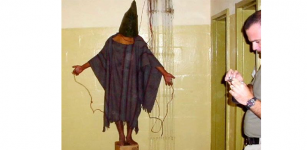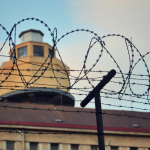Torture is a Crime, but it’s Still Widely Practised

The Convention Against Torture and Other Cruel, Inhuman or Degrading Treatment or Punishment was adopted by the United Nations General Assembly in December 1984. Since it came into force in June 1987, it’s prohibited torture under international law.
Article 1 of the convention defines torture as any act carried out by a public official “by which severe pain or suffering, whether physical or mental, is intentionally inflicted on a person” in order to extract information, punish, intimidate or coerce.
The document works on the principle of universal jurisdiction. This means that nations that are a party to the treaty are not only responsible for stopping torture in their own territory, but they’re also required to prevent the practice internationally by nationals who are not their own.
The third article of the UN Convention Against Torture requires that countries don’t send individuals to other countries where there’s a real risk that the person could be subjected to torture or other cruel, inhuman or degrading treatment or punishment.
But, despite 164 nations having made the provisions of the convention legally binding, torture continues to be utilised around the globe. Indeed, Amnesty International has reported on torture being carried out in 141 countries, which accounts for three-quarters of the world.
Degradations at Abu Ghraib
During a CIA interrogation on 4 November 2003, Manadel al-Jamadi was hung by his arms, which were tied behind his head. This internationally condemned torture technique is known as Palestinian hanging, due to its alleged use by Israeli forces upon Palestinian detainees.
The prisoner – who’d been detained due to his suspected involvement in the bombing of a Red Cross office in Bagdad – died within half an hour of being strapped up. And no information was extracted whilst he was being questioned.
The US military ruled his death was murder. And the incident sparked outrage when photographs emerged of US soldiers at Abu Ghraib prison kneeling beside al-Jamadi’s corpse giving the thumbs up sign. However, it was later announced that no charges would be brought against those involved.
The death of al-Jamadi was part of a much larger scandal that broke around the widespread use of torture at the prison by US personnel. This included the use of physical and sexual abuse, rape and murder.
US authorities claimed the use of torture at Abu Ghraib was an isolated incident. However, human rights organisations asserted that its practice was being carried out at other US overseas detention centres.
Abuses at Guantanamo Bay
And then, of course, there are the prisoners detained by the United States government at Camp X-Ray in Guantanamo Bay, Cuba, hundreds of whom have been held shackled and handcuffed for long periods of time in square, concrete-floored outdoor cages which are less than 2.5 metres wide.
There have been extensive reports of physical and mental torture in the facility, including degrading treatment at the hands of US military personnel.
Many have been held for years without charge, and those released have often been required to sign agreements not to speak or publish about their treatment at the camp.
Before his election as US president, Barak Obama promised to shut down the facility – but he reneged on that promise after he came to power.
The UN special rapporteur on torture Nils Melzer announced last December that he had information that torture techniques are still being used at the US facility at Guantanamo Bay.
Incidentally, the US has not ratified the UN Convention on Torture, which means it’s not legally binding.
Inflicted on political prisoners
Currently, there are around one million Uyghur people being detained in political indoctrination camps in far western China. These people – who are deemed to hold politically incorrect ideas – are being held in indefinite detention, without charge or trial.
And reports have emerged from the camps detailing that torture techniques are being applied to those who fail to follow the rules.
Detainees can be subjected to waterboarding – a once popular US technique – that involves strapping down a person on an angled board, covering their mouth with a cloth and then pouring water over their face to simulate drowning.
The tiger chair is also being used at these re-education camps. This involves a person sitting on a board with a backrest. Their legs are tied to the bench above and below the knees, then bricks are placed under their ankles. This method causes a backward bending of their legs.
But, reports of Chinese authorities using torture on detainees is not limited to these recently established camps. There have been detailed accounts of Falun Gong practitioners being tortured in Chinese prisons for many years.
The Chinese government began locking up practitioners of the Buddhist-Taoist meditation practice in 1999. And not only are these prisoners of conscience being tortured, but it’s also reported that they’re being murdered, so their organs can be removed and sold to patients.
Torture Down Under
Australia ratified the UN Convention Against Torture on 8 August 1989. And an obligation of any country that does so is that it must take effective measures to outlaw torture under its local laws.
Section 274.2 of the Criminal Code Act 1995 (Cth) stipulates that an individual who engages in torture – as defined in the UN convention – has committed a crime. The maximum penalty for this offence is 20 years behind bars.
But, despite torture being prohibited in this country, it still occurs. Take the reports about Don Dale youth detention centre. They revealed that in 2014 six children detained at the facility were tear-gassed in the isolation cells that they were being held in for close to 24 hours a day.
Footage also emerged of 17-year-old Dylan Voller being strapped to a mechanical restraint chair and hooded for almost two hours. This practice was carried out on multiple occasions. And Mr Voller has stated that prison authorities began using it when he as young as 11 or 12 years old.
These revelations led to the establishment of the Royal Commission into the Protection and Detention of Children. However, it was announced last May that following the investigation no charges would be laid against any of the youth justice officers involved.
Moves against institutionalised torture
The Optional Protocol to the Convention Against Torture (the OPCAT) was adopted by the UN General Assembly in 2002. It provides additional protocols built upon the UN Convention Against Torture, aiming to strengthen the protection of people being held in places of detention.
Following the Don Dale reports, Australia ratified the OPCAT treaty in December last year. This means the government has agreed to allow random inspections of all Australian places of detention. And these inspections have a focus on preventing torture and abuse before it happens.
Winston Churchill Memorial Trust fellow Steven Caruana carried out a nine week investigative trip last year to nations where the OPCAT has already been implemented. And he reported that the protocol has had a positive impact on local facilities and those detained within them.
“It is perhaps food for thought to consider whether the Royal Commission would have been necessary had OPCAT already been in place,” Mr Caruana told Sydney Criminal Lawyers® in September.
“The former attorney general George Brandis speculated it may well be that the mistreatment would not have occurred.”








